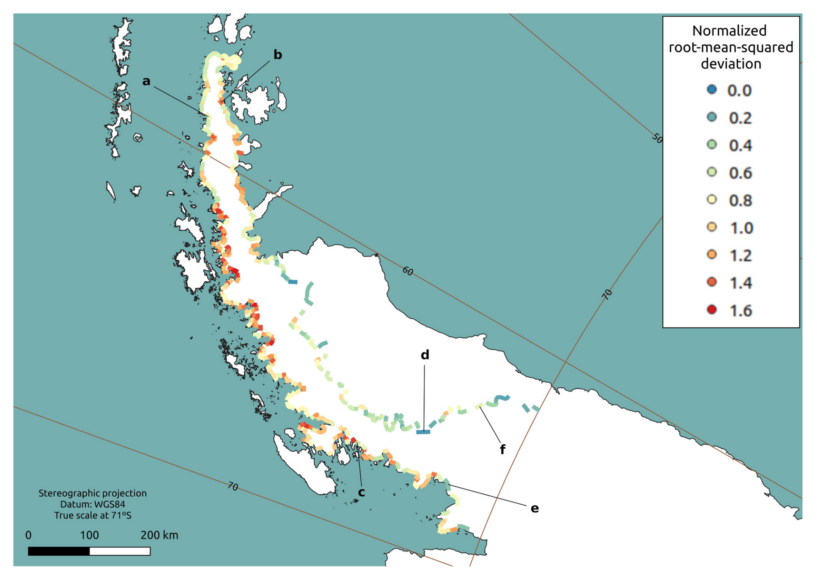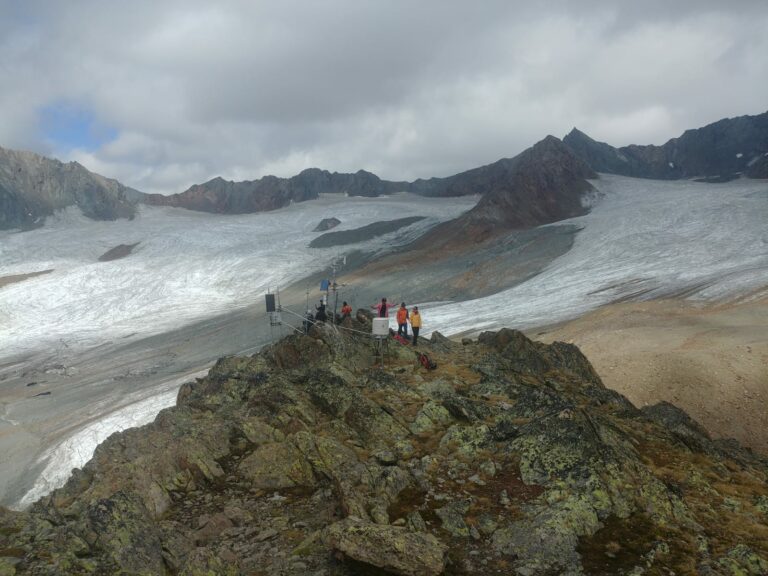Estimating ice discharge of the Antarctic Peninsula using different ice-thickness datasets
The Antarctic Peninsula Ice Sheet (APIS) has become a significant contributor to rising sea levels, and accurately estimating ice discharge from its outlet glaciers is essential for assessing the mass balance of the region. This study calculates ice discharge from APIS outlet glaciers north of 70°S using five commonly used ice-thickness reconstructions, employing a consistent surface velocity field and flux gates. Results indicate a total volumetric ice discharge ranging from 45 to 141 km3 per year for 2015–2017, with a mean of 87 ± 44 km3 per year. The substantial differences in results highlight the large uncertainty in current ice-discharge estimates, emphasizing the challenge of accurately modeling the ice-thickness distribution in this complex and data-scarce region.






